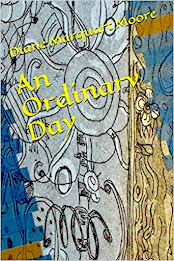 |
| Fallen white pine, Sewanee |
This will probably be the shortest blog I’ve done during
seven years of blogging. The picture on the left indicates my whereabouts during an
unusual winter visit to our second home at Sewanee. What you’re viewing is an
accidentally-felled pine tree (!) at the end of our drive that will join the
graveyard of trees we purposely felled in our front yard in New Iberia,
Louisiana last month.
 |
| Foot prints in snow |
As you can see, at least three inches of snow and the felled
tree impede our progress out of here. It also impedes the mobility of six
students whose cars are under the trunk of the felled pine. Why are we here? We
came up from Louisiana to a meeting at St. Mary’s Convent and found our home
had been
entered, keys and the remote to our electronic door stolen, a smoking
parlor set up in my study, and the culprits were brazen enough to return to our
property (supposedly protected against public invasions) the night we arrived
and sat out on our porch, smoking and chatting it up. We rattled a door knob
and they scattered, but we’ve been forced to install security in a cottage set between
two dormitories and one fraternity house on the campus of the University of the
South. We live in a community that touted having zero crime when we thought
about moving to the university campus at Sewanee eight years ago. I hope this
brief entry sets the record straight about that much-advertised propaganda. |
| Tree smashed six cars |
Not to worry – we have two eggs, a half loaf of gluten-free
bread, blueberries, rice and salsa, grits, ghee, and coffee, and we are hoping
to get out of here within the next day or so for a trip to Florida. We have
cell service, heat, water, and Sister Elizabeth says “a sense of humor.” But as
Ma Kettle once commented, “some days it don’t pay to put on your clothes”
(except that she must have lived in a warmer clime because I have on two
layers)…
 |
| 65 Fairbanks after snow storm |
Mind you, I’m not grousing or boodaying or saying that I won’t
return to this community one day (if I ever leave), but I’m having
second thoughts about the wisdom of owning a place at “Weathering Heights.”
Meanwhile, here are some pictures of the “disaster area” (minus a snap of the
desk in my study that held a quilt borrowed from one bedroom and spread with
tobacco leavings – I might add this campus is advertised as a “no smoking campus” –
more propaganda)! Mischief is afoot in the world.















